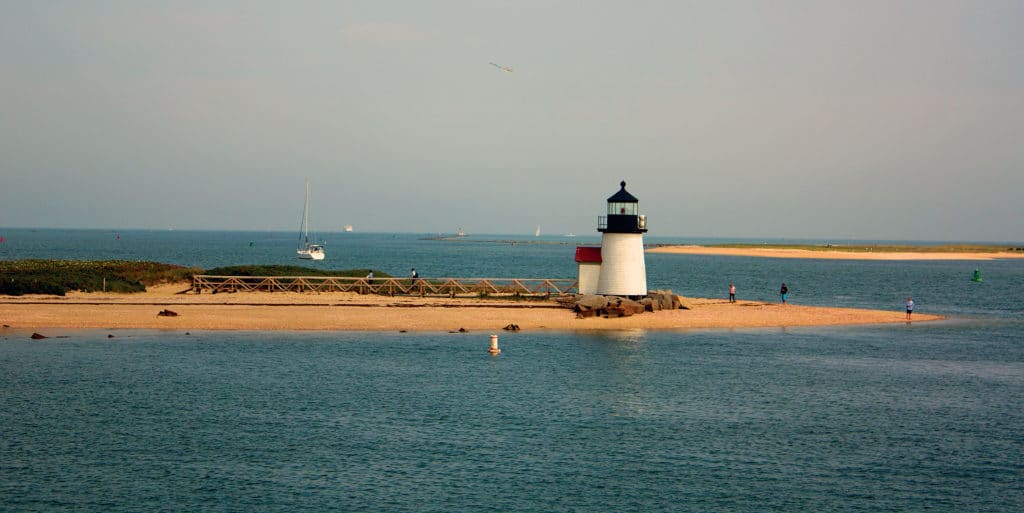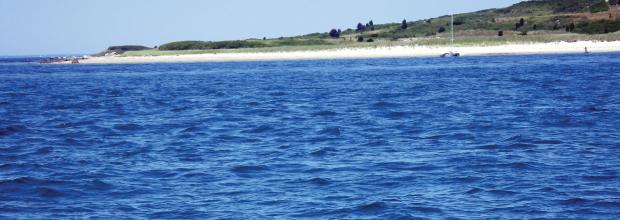
It was a spectacular early August morning, the next to last day of a weeklong sail that had taken us from Newport, Rhode Island, across Buzzards Bay to Martha’s Vineyard and then on to Nantucket aboard our Sabre 34. Every day so far had been sun-splashed and breezy, and now, with the bow pointed toward home, it looked as though our luck might hold.
We ran the length of Vineyard Sound with just three tacks, heading into a southwest wind that was forecast to build into the mid-20s or better that afternoon, but which for the moment hovered in the very civilized 10- to 12-knot range.
Our plan was to cut through Quicks Hole into Buzzards Bay and drop my brother and his wife at Cuttyhunk to catch a ferry to the mainland. My wife, Sue, and I would sail the final leg of the trip alone the next day once the wind had tamed down.
It was just before noon when we turned and headed down the channel between Nashawena and Pasque islands. Behind us, a slightly larger ketch had tacked onto the same heading, so that now, besides a nearly perfect sail, a race was on! Sitting to leeward, I kept my eyes on the jib and telltales. The rest of the crew, perhaps not realizing the contest at hand, talked and searched for cows on the beach.
All was fine, glorious even. And then it wasn’t. In an instant, the 135 percent genoa sagged halfway to the deck. We’d discover later that the stitching that holds the web eye to the head of the sail had failed due to UV damage. For now, though, I jumped to get the engine started as my mates ran forward to pull down and secure the jib.

Clear of the islands, we decided that since we still had the engine and main, it would be best to motorsail straight to Narragansett Bay while we had extra hands aboard. So we set off at a respectable 5 knots, the main trimmed tight and the engine turning over at a miserly 1,800 rpm. An hour later, though, the breeze began to build with determination, and with it, the waves. This knocked our speed down to 3 knots at best and set us some to leeward. By early afternoon, with the marker for the shallows surrounding the Hen and Chickens in sight and abeam, we were pounding into sizeable swells and seeing frequent gusts into the high 20s. I recall looking around and thinking what our options might be if the sail, the engine — or both — decided to lay down on the job.
And that’s when I noticed no water coming out with the exhaust. A quick look at the nearly pegged-out engine temperature gauge sent me diving for the kill handle as I threw the wheel over to tack away from the approaching lee shore. There we sat, head to wind for an agonizingly long time until finally the bow came around and we once again gained steerage.
Below, I discovered that a chronic problem with the gasket on the raw-water intake filter had reared its nasty head again after more than a year of dormancy. I was able to fix it, and we were soon on our way, but the remainder of the 20-something-mile trip was anything but relaxing as we waited to see what else might fail.
Out on the water, it’s been my experience that the proverbial Mr. Murphy — he of the adage “What can go wrong, will go wrong” — seldom comes calling alone, or when expected. And so, though I sail for pleasure, somewhere in the back of my mind, I brace for disaster.
I bring this up because while safety at sea is the theme of the November issue, it’s something we should be thinking about every time our sails are set. Mr. Murphy may join the crew at any time; it’s up to us to be ready when he does.
To read more from editor Mark Pillsbury, click here.








